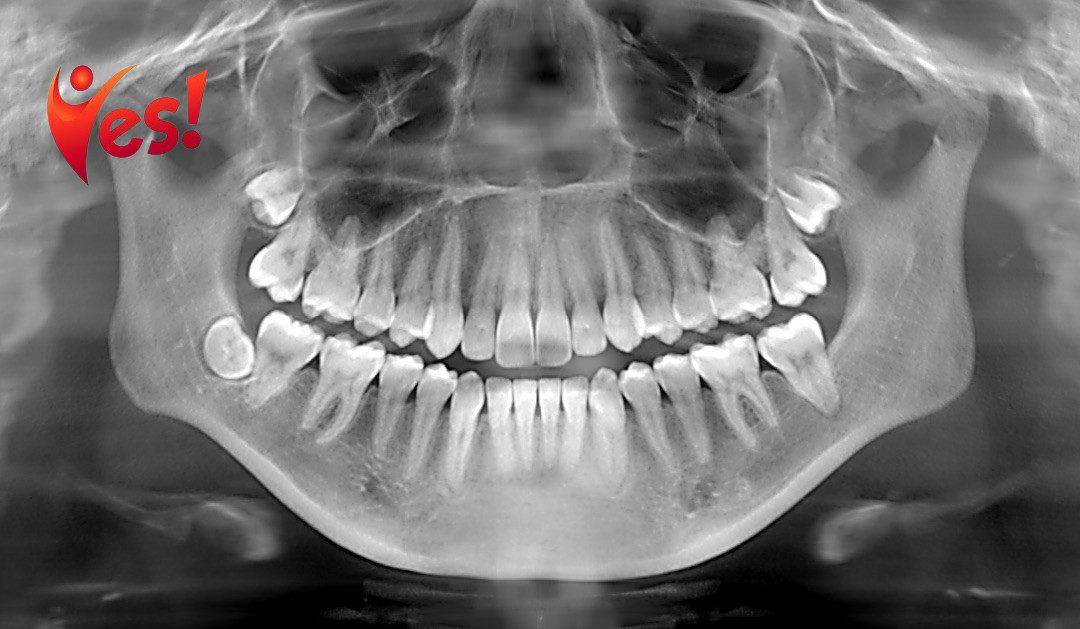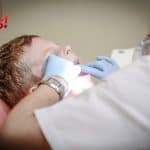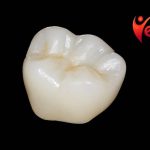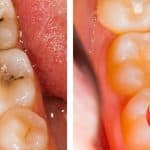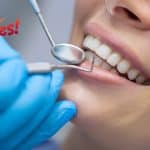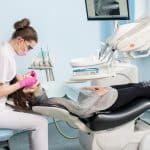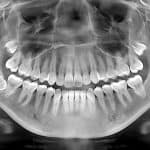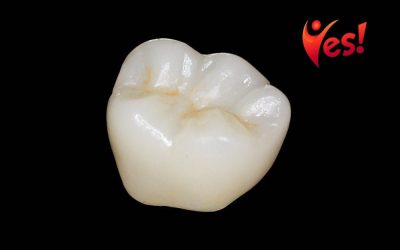Table of Contents
What Are Dental X-Rays?
Before going to a dentist, you might be wondering What Are Dental X-Rays? In this article, we’ll discuss their purpose, their safety, and what to expect if you have one taken. We’ll also talk about what you can expect to pay for them. So, how do you know when you’ll need one? Read on to find out! There are a few risks associated with x-rays.
X-rays
X-rays for dental work are necessary for a variety of reasons. They can help your dentist detect the condition of your teeth and gums, which can help them plan the best treatment for you. These images also help your dentist diagnose certain types of infection, including gum disease, cleft palate, and tooth decay. They can also identify abnormal bone structures and identify impacted teeth and cysts. These images are also used to diagnose certain conditions and monitor the progress of dental work.
X-rays for dental work can be painful and uncomfortable, but they are essential to your dentist’s diagnostic work. Regardless of the reason for your visit, X-rays can identify potential dental problems. Dental x-rays can also help doctors detect tooth decay and other dental issues early, which can save you from painful treatments and save you money. Besides detecting dental issues, X-rays can also be used to plan your dental work, helping your dentist provide you with a bright smile.
Their purpose
Different types of x-rays have specific purposes. The most common uses of a bitewing x-ray are checking for cavities between the teeth, while the occlusal x-ray captures images of all teeth at once. It helps dentists determine whether any teeth have missing or broken crowns. The dentist may ask the patient to bite on a special piece of paper while taking the images.
Some dental x-rays are specialized, and are used for more complex purposes. They show the roof and floor of the mouth, and can be used to check for impacted teeth, extra teeth, and jaw problems. These X-rays can also detect solid growths on the mouth. This makes them a valuable tool in diagnosing many dental issues. However, they may not be used as routinely as other types.
Their safety
Dental x-rays involve exposure to radiation. Fortunately, the American Dental Association (ADA) has adopted the ALARA principle, or “as low as reasonably achievable,” which limits the amount of exposure to the patient. ADA-approved techniques include using the smallest image receptor possible, reducing the size of the x-ray beam, and using leaded aprons and thyroid collars. A pregnant woman may also be covered with an apron to minimize her radiation exposure.
A systematic review of randomized controlled studies has revealed that dental X-rays can cause cancer, including thyroid cancer. These results suggest that the doses from dental X-rays are not as high as those from other sources of radiation. However, dental practitioners may be regularly exposed to high levels of radiation. Therefore, dental practitioners should be especially aware of their high exposures to diagnostic radiation. For now, it is difficult to determine the safety of dental X-rays.
Their cost
Dental x-rays are not cheap, but they are a necessary part of routine dental care. Taking regular x-rays can reveal problems early and prevent major procedures down the road. In addition to detecting early issues, dental x-rays can be valuable for planning future treatments. In some cases, dental x-rays can help detect the presence of wisdom teeth, which many people don’t realize is present.
The most common type of dental x-ray is called an intraoral X-ray. The dentist will take it to detect cavities. In addition to showing cavities, these images can show decay between teeth and bone thickness. An x-ray will reveal any cavities and other problems that require treatment. You can opt for an occlusal X-ray if you suspect that you might have an impacted tooth.
Their dangers
In the United States, dentists use x-rays to diagnose dental problems. Despite the fact that the exposure to ionizing radiation from dental x-rays cannot be seen or felt, it is still an extremely harmful form of radiation. Dental roentgenography has been the subject of an extensive study to determine the dangers of x-rays and the ways to reduce the exposure to this potentially harmful radiation.
Radiation can damage body tissues and cells and is a leading cause of cancer. Although dental X-rays produce a very low radiation level, it adds up over your lifetime. A single dental X-ray can contain hundreds of mSv of radiation, or about one-tenth of the daily exposure that a person gets from sunlight. Fortunately, advances in dental technology have helped minimize the risk of radiation exposure.
Their benefit to you
The benefits of digital X-rays for dental care are many. First, they are more accurate and efficient, using far less radiation than plain film x-rays. Second, digital x-rays can be enlarged so your dentist can see any potential issues in greater detail. Finally, digital x-rays can be stored forever, either in a cloud or on your computer. They can be printed for storage, or sent electronically to your insurance company for review.
Another benefit of dental x-rays is that they are effective in diagnosing dental problems earlier than you might realize. These X-rays can detect tooth decay, impacted wisdom teeth, and early stages of bone lesions. As such, these procedures are not necessary every time you visit a dentist, but they can save you pain, money, and even your life! Although dental x-rays are uncomfortable, they can be an important preventive measure.
How Often Do You Need Dental X-Rays?
Dental x-rays are an important diagnostic and preventative tool, but how often do you need them? Each person’s situation is different, so your dentist can’t give you a set recommendation. Nevertheless, the American Dental Association recommends having dental x-rays every two to three years. But what exactly are dental x-rays? Here are a few facts to consider before scheduling your next appointment.
X-rays are a preventative and diagnostic tool
X-rays are a valuable diagnostic tool. They help dentists detect damage that might not be visible during a regular dental exam. How often you should visit your dentist for an x-ray will depend on your dental health, age, and risk factors for disease. For example, children may need x-rays more frequently than adults, since their teeth are still growing and more susceptible to tooth decay. Your dentist will discuss these issues with you and decide how often to take an x-ray.
X-rays are often used to detect early signs of tooth decay and bone loss. They can also detect cysts and nodes in the gums. An x-ray can also give dentists a close view of your dentition and alert them to orthodontic concerns. However, X-rays are not a cure for tooth decay. Depending on your age, you may only need an x-ray every six months or a year.
They are quick and painless
Depending on the dental x-ray that is being taken, it could take between five and fifteen minutes. In general, dental X-rays are painless, but some children may experience some discomfort while being held still and by the intraoral x-ray tools. Despite this, dental X-rays are a necessary part of dental care. In addition to being painless, dental x-rays are recommended by the American Dental Association.
The process of getting x-rays is simple and quick. The X-ray technician will hold the patient in a position while a lead apron is worn to protect the patient from radiation. The x-ray technician will then bite into a small piece of plastic and take a series of images of one or more parts of the mouth. The patient will be given a report of the results almost immediately after the x-ray session is finished. This way, the dentist will know what to look for and what treatment to give to the patient.
They can provide valuable information about your oral health
There are some precautions you should be aware of before dental X-rays. During pregnancy, you should avoid dental visits as radiation is not safe for an unborn baby. Generally, dental X-rays are done before a cleaning or before you have a filling placed. However, if you have certain health conditions or are pregnant, you should not avoid dental visits.
An X-ray taken from your mouth contains high-resolution images of your teeth and surrounding tissue. They can reveal any hidden cavities and the health of tooth roots and bone surrounding them. It can also detect some types of tumors, abscesses, and cysts. It is also used to monitor the position of impacted teeth. X-rays can be taken using intraoral or extraoral films.
While dental X-rays can be uncomfortable, they are essential for a dentist to detect caries, a condition that can progress rapidly without diagnosis. The ADA, together with 80 other health organizations, has issued a document called “Image Gently” to guide dental practitioners in their work. This brochure addresses common questions and concerns about dental X-rays and explains what you should expect during your visit.
They can help you decide whether to get an x-ray
Dental x-rays used to be the only option for diagnosing a tooth decay, but now your dentist has digital x-rays. These specialized devices are much more efficient, use less radiation, and are easier to store. Your dentist can transfer the images to another dentist if you change offices. Digital x-rays also cost less than traditional radiography. With traditional film x-rays, the images must be developed and printed on film. This process can take several weeks and requires additional appointments. The advantage of digital radiography is that you do not have to wait for the image to develop. Digital x-rays project an image immediately, and the dentist can adjust it to show the specific areas.
Dentists recommend getting dental x-rays every two to three years. But the frequency of the x-rays depends on your age, your risk of developing a disease, and your current dental health. In addition to the age factor, children often need more x-rays than adults. Because their teeth are still developing, they are more prone to tooth decay. When determining if you should have dental x-rays, your dentist will first take a history of your oral health and decide whether to recommend it.
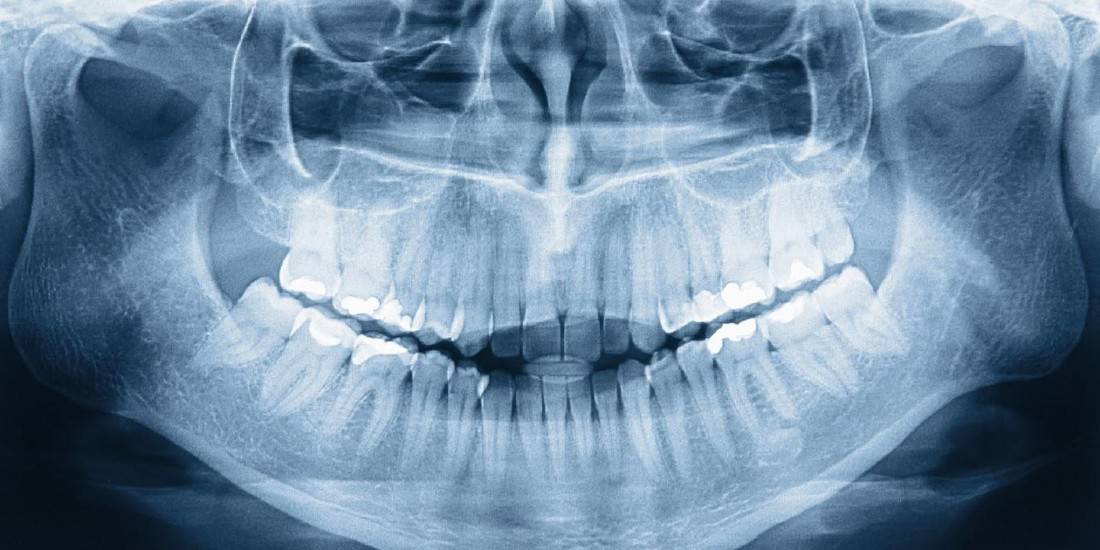
Are Dental X-Rays Safe?
When your dentist uses X-rays, you are being exposed to radiation. These rays can be taken to detect decay and other conditions that are present in your mouth. Dental x-rays are important to monitor bone loss caused by periodontal disease. Smokers have a higher risk of developing this disease. X-rays can also be used to detect fractures in teeth. While they are relatively safe, they are not without risk.
Radiographs
While dental x-rays can expose you to radiation, they are generally considered safe by health authorities. Dentists follow the ALARA principle, which stands for “As Low As Reasonably Achievable.” This helps them reduce the amount of radiation they use and limit the patient’s exposure to radiation. They also use the smallest size of x-ray beam possible and leaded aprons when possible. Thyroid collars are also used in certain circumstances, and radiation-sensing equipment is available for pregnant women.
Among other uses for dental x-rays, periapical x-rays are very useful. These images help dentists detect decay in the roots of the teeth and their adjacent bone structures. The bitewing x-ray helps dentists diagnose gum disease and other dental issues, such as the presence of an impacted tooth. In addition to being helpful in diagnosing dental issues, dental x-rays are also helpful in determining how much space a patient’s teeth require to be positioned in the mouth.
Dental X-rays
If you are a pregnant woman, you should not have any dental X-rays performed. The radiation levels in dental X-rays are low, but you should still avoid the procedure if you are pregnant. The radiation emitted from dental X-rays can harm the fetus. Therefore, it is imperative for you to disclose your pregnancy to your dentist. The dentist will explain the procedure in detail before beginning.
However, you shouldn’t have an X-ray performed every time you visit the dentist. Your dentist may only use the X-ray if you’re experiencing a serious dental problem. A healthy mouth doesn’t require X-rays every year. According to Stuart White, a professor emeritus at the UCLA School of Dentistry, dental X-rays are safe as long as you go to a dentist who performs them.
Radiation
The safety of dental x-rays has long been debated. Fear of radiation has resulted in many patients avoiding dental care. The good news is that radiation exposure is extremely low and can be reduced with advanced dental technology. Digital X-rays require less radiation than traditional film x-rays, and may reduce the amount of radiation exposure by up to 90%. But even with advancements in dental technology, it’s still important to know the risks associated with dental x-rays.
The amount of radiation received from dental x-rays is extremely low compared to the amount of radiation from a single airplane flight or natural background. A typical dental exam with four bitewings provides approximately 0.005 millisieverts (mSv), equivalent to one day of natural background radiation. However, a panoramic x-ray will provide the most radiation, up to 0.079 mSV, or the equivalent of one millisiervert.
Radiation exposure
Radiation exposure during dental x-ray exams can be significantly reduced. Modern X-ray machines reduce the amount of radiation patients are exposed to while enhancing the quality of the images. A conventional x-ray uses a thick film that is moderately sensitive to x-ray radiation. It is sandwiched between two intensifying screens to minimize the dosage required. However, these screens scatter x-ray radiation, resulting in reduced accuracy and spatial resolution.
While this amount of radiation may not seem large, it does represent a significant part of overall radiation exposure. Dental x-rays use ionizing radiation. These rays strip electrons from atoms when they pass through the body. The resultant protons are known as free radicals. These free radicals damage cells in the body. They may eventually grow into cancerous cells. This is why the American Dental Association and other health organizations have taken action to minimize dental radiation exposure.
Radiation levels
The radiation levels from dental x-rays are low compared to background levels of ionizing radiation. In fact, one dental x-ray is equivalent to 20 minutes of natural background radiation. However, dental x-rays are a concentrated form of radiation that is applied to the body differently than background radiation. Because of this, you should be aware of the potential risks. This article discusses dental x-ray radiation and how to minimize the exposure.
The American Dental Association has published a table that compares the radiation exposures to the average person. For a normal person, the average exposure to dental x-rays is equivalent to about 20 full series of X-rays. The amount of radiation is also lower with digital X-rays. During a dental x-ray, a lead “bib” is worn over the vital organs. In some cases, a thyroid collar is also worn, particularly in women of childbearing age.
Are Dental X-Rays Safe For Kids?
Are Dental X-Rays Safe for Children? Experts weigh the risks and benefits of X-rays before performing any dental procedure on a child. The radiation emitted by X-rays varies depending on the density of tissue and the distance the radiation has to travel. A dentist who is trained in radiation safety will carefully weigh these factors before allowing a child to receive an X-ray. In general, dental X-rays are considered safe for children.
Digital X-rays reduce radiation exposure by 80-90%
Unlike traditional x-rays, dental radiographs for kids are entirely safe. Modern dental practices use digital X-rays which reduce radiation exposure by 80-90%. Digital X-rays are much easier to interpret and can be enlarged to reveal dental problems. Each treatment room in SKY Pediatric Dentistry uses a 21.5-inch Desktop Mac. In addition to the reduction in radiation, digital X-rays provide better quality images, which helps identify dental problems more easily.
X-rays are used to examine and monitor a child’s dental health
Dental x-rays are an essential part of a child’s oral health. They help dentists detect cavities early, diagnose bone diseases, evaluate injuries, and plan orthodontic treatment. Children need more dental x-rays than adults due to the rapid growth and development of their mouths. According to the American Academy of Pediatric Dentistry, a child should have X-rays done every six months if they are at a high risk for dental decay. In addition to revealing decayed teeth, X-rays can also reveal the presence of periodontal disease, a missing tooth, or an abscess.
There are several types of x-rays, but the most common is called an intraoral x-ray. These images are highly detailed and allow dentists to detect cavities and determine how much space is left in a tooth. These x-rays also reveal if there are any impacted teeth or cavities. They can also help dentists monitor the health of a child’s teeth in general.
X-rays are used to detect cavities
The purpose of x-rays is to identify cavities before they develop, to evaluate the development of erupting teeth, and to diagnose bone disease or injury. In the case of children, x-rays are more frequent than those used for adults because the mouths of children change and grow much faster than that of adults. The American Academy of Pediatric Dentistry recommends that children with a high risk for tooth decay receive X-rays every six months. Children with low risk for tooth decay may need fewer X-rays less frequently.
Dental x-rays can reveal hidden cavities or problems underneath the gum line. Dental x-rays can snap an image of an exposed crown or root, revealing any problems beneath the gum line. Despite the negative perception of x-rays among parents, x-rays are painless and safe for children. According to the American Dental Association, the radiation exposure from dental x-rays is minimal.
Jawbone abnormalities
Dental X-rays are used in the diagnosis of various medical conditions, including tooth decay, bone abnormalities, and gum disease. Children should undergo these tests at least once a year. The dentist can determine how often x-rays are needed and which type to perform. Dental X-rays are safe for children who have no jawbone abnormalities. Children are generally not afraid of the procedure.
Modern technology has made dental X-rays safer for children. Most dental x-rays have low radiation levels and are accompanied by lead body aprons and neck shields. The equipment used to take these images filters out unnecessary radiation and limits the beam to the areas of interest. Children should wear a lead apron and a protective neck shield. This will ensure that their jawbones are as safe as possible.
Emerging teeth
When it comes to the safety of dental x-rays, parents should know that digital x-rays have a 90% reduction in radiation compared to traditional film x-rays. However, dental offices still strive to limit the radiation exposure by wearing lead aprons and thyroid shields. Panoramic x-rays are a safe way to monitor erupting teeth and provide a better overall view of a child’s teeth, jawbone, and surrounding area.
Dental x-rays show a lot more than cavities. A child’s dental x-rays may be necessary for various reasons, from evaluating the emerging teeth to identifying diseases in the bones and jaws. Depending on the condition of a child’s mouth, x-rays can also be helpful in evaluating the impact of an injury. By getting an early diagnosis, dental treatment can be better tolerated.
Are Dental X-Rays Safe During Pregnancy?
Are Dental X-Rays Safe Throughout Pregnancy? Whether a pregnant woman should have dental x-rays is a hot topic. You should also know the radiation dose and how to protect the fetus from the x-rays. Hopefully, these tips will help you make an informed decision. But before you decide whether to get dental x-rays, consider the precautions listed below.
Getting dental x-rays while pregnant
Pregnant women should be aware of their dentist’s office policy regarding dental x-rays, as well as other pregnancy-related issues, so they know whether they can schedule the procedure or not. It’s not uncommon for women to delay dental procedures until later in their pregnancy, such as after the baby has been born. However, pregnant women should not be put off by this as dental work is important to their health and to the health of their unborn baby.
Because the first three months of pregnancy are considered the most active for the fetus’ development, many expectant mothers choose to postpone dental x-rays until later in the pregnancy. Although dental x-rays can be done at any time during this time, most medical practitioners recommend waiting until the second trimester to undergo dental work. This is because the risk of harm to the unborn child is much lower during the second trimester.
Getting them while breastfeeding
While most pregnant women are not advised to undergo dental x-rays during their pregnancy, there are certain exceptions to this rule. While breastfeeding, you are still able to get dental x-rays. If you have an emergency situation, you can postpone the dental procedure until after you’ve given birth. But in the meantime, you should consider whether dental procedures are safe during pregnancy.
The most important thing to remember when getting dental x-rays during pregnancy is to be comfortable. A lead apron is the most effective way to reduce exposure to radiation. A lead apron will block 90 percent of the radiation. You should also bring a pillow to your appointment. Moreover, you should bring a pair of headphones to minimize the noise. If you don’t want to experience any discomfort during your visit, you should consult your dentist before breastfeeding.
Radiation doses
Recent studies suggest that a single dental x-ray may pose a low radiation risk to a pregnant woman. The fetal dose from a single CT examination is 0.005 mgy, less than the background radiation. This may provide some comfort to women who are concerned about dental imaging. It is important for clinicians to be cautious about radiation exposure during pregnancy, however, and limit unnecessary procedures to postponed after the pregnancy is complete.
It is important to note that fetal doses from diagnostic X-rays are usually less than 1 mSv, which is the threshold allowed by the International Atomic Energy Agency. If you are pregnant, it is necessary to inform the dentist of your pregnancy. However, even in this case, the fetal dose is still very small compared to what is expected of women who are not pregnant.
Protecting the fetus
Dental x-rays can cause radiation to the fetus, but they are usually directed away from the uterus and pelvis, which are areas of the body with a high concentration of estrogen and fetal DNA. While a lead apron is uncomfortable and will be placed over the abdomen during the procedure, the radiation it will cause to the fetus is very low and poses no risk to the fetus.
It is important to inform your dentist that you are pregnant. If possible, he may postpone some dental procedures until after the birth of the baby, but if it is an emergency, the dentist cannot wait until after delivery. Delaying these procedures can also be harmful to the mother and her unborn child. While dental x-rays are not dangerous to the fetus, it is best to avoid dental work during pregnancy.
Panoramic Dental X-Rays
If you are curious about the benefits of dental x-rays, read on. Panoramic dental x-rays are an excellent way to diagnose certain types of dental problems. These images capture the jaw, teeth, facial bones, and surrounding tissues, forming a flat image that the dentist can use to diagnose various dental issues. While they are not a replacement for a dental exam, they do have their advantages.
Benefits of panoramic dental x-rays
Panoramic dental X-rays can be beneficial for the treatment of several different dental problems. Compared to regular x-rays, they take less time to take and can provide a comprehensive view of the entire mouth. The patient is asked to remove metal objects from their mouths and stand or sit in the center of the unit. The technician will then position the patient’s head and put a bite-blocker in the mouth to ensure that the teeth are properly aligned. The radiation level of OPTG is negligible and is often 40 times lower than the norm.
Another advantage of panoramic dental x-rays is the ability to identify jawbone fractures and other irregularities that would otherwise go unnoticed with traditional x-ray machines. While traditional x-ray machines require the dentist to disinfect parts and wrap the sensor for every patient, a panoramic x-ray machine allows for more detailed pictures in a short amount of time. This results in better patient care.
Identifies impacted teeth
A panoramic dental x-ray is a type of x-ray that shows the entire face of a patient. The X-ray is created by a machine that has two sides: one has a film or detector and the other side has an X-ray tube. The X-ray tube rotates around the patient’s head while the detector rotates in the opposite direction. The resulting image shows the entire mouth, including the impacted teeth.
The resulting images can be magnified many times on a computer screen. If a problem is detected, the dentist can send the images electronically to another dental practitioner, specialist, or referring doctor. The images are also easily transferable if a patient moves or changes dentists. The benefits of panoramic dental x-rays are numerous. The procedure is considered safe for most people. However, children are more susceptible to the radiation than adults.
Aids in the diagnosis of tumors
A dentist uses a panoramic dental X-ray to examine a patient’s entire mouth. This X-ray produces a flat representation of the jaw’s structure, which makes it easier for the dentist to analyze every part of the mouth. Panoramic dental x-rays aid in the diagnosis of tumors. The images can help doctors diagnose tumors and other dental diseases.
The images created by a panoramic x-ray show the entire upper and lower jaw in one view. These images are useful for detecting the positions of fully emerged and soon-to-emerging teeth. They can also help diagnose tumors and diagnose impacted teeth. The benefits of using panoramic dental x-rays to diagnose tumors are numerous. The American Dental Association has recommended that the FDA update its guidelines.
Provides a flat representation of the jaw’s curved structure
The benefit of panoramic dental x-rays lies in their ability to create a single, accurate image of the entire mouth. Panoramic X-rays allow the dentist to examine every part of the mouth, including bone abnormalities, cysts, impacted teeth, infections, and tumors. Panoramic dental x-rays are taken on average every two to three years, and can reveal the bone structure of the teeth and jaw.
Patients can expect a panoramic dental x-ray to last between twelve and twenty seconds. The procedure is quick and painless, but patients should still inform their dentist or oral surgeon if they are pregnant or breastfeeding. Patients should remove all jewelry or metal objects before undergoing the procedure. Patients should also remove any metal jewelry to avoid getting contaminated with radiation. An apron with a thyroid collar is also worn to protect the body from unnecessary exposure to radiation.
Is used for orthodontic treatment
A dentist may use dental x-rays for a variety of purposes. For example, a bitewing x-ray can show cavities that are difficult to reach, such as under the gum line, while a panoramic x-ray shows the entire mouth, including the jaw bone. Another type of x-ray, known as an occlusal x-ray, shows the arch of the teeth and the bone that supports them.
This type of x-ray captures the entire mouth in two-dimensional images, which makes it an effective diagnostic tool for doctors. Panoramic x-rays are particularly useful for planning orthodontic treatment and revealing the position of the wisdom teeth. They are also helpful for checking whether an implant is compatible with the patient’s jaw bone. But how do dentists use panoramic dental x-rays?
What Are Digital Dental X-Rays?
If you’re unsure what digital x-rays are, you’re not alone. There are many benefits to this type of dental imaging. These x-rays are faster than traditional x-rays, since you won’t have to wait for film to be developed. Digital x-rays are created instantly and transferred to a computer connected to the machine. You’ll experience less wait time, which allows your dental team to spot problems as they arise. Digital images are also much clearer, meaning that dentists can enlarge them without sacrificing quality.
Subtraction radiography
Digital dental x-rays can be taken directly or indirectly. Subtraction radiography, for instance, allows dentists to compare a recent x-ray to an old one. The computer compares the two images and shows the differences between the two. This method has its own drawbacks. For this reason, it is often preferred by dentists who use it for a variety of applications.
In this study, the negative predictive value of external root resorption was calculated at 58.8%, 90%, and 95% for dental radiographs that were obtained using the standard method. The results of the test were compared by using the Kappa test and the Z-test to evaluate correlation between the observed and gold standard radiographs. Digital subtraction radiography had a sensitivity of 40%, 80%, and 90%, while the sensitivity of the secondary radiograph was 100%.
The relative accessibility and stability of digital imaging technologies allow for the generation of geometrically identical radiographs for different time periods. This feature facilitates the production of high diagnostic value subtraction images. This technique applies to situations where there is a slight change in the structure or to areas where there is a significant amount of structured noise. The results show that digital subtraction radiography is superior to conventional dental x-rays.
Bite-wing
The bite-wing is an area of the mouth that requires a specific type of x-ray. It is characterized by the contact areas between the teeth and is an important diagnostic tool. Incorrect horizontal angulation can lead to overhanging structures in the horizontal plane. Often, these structures overlap because of incorrect angulation. Therefore, an X-ray taken at an incorrect angle can result in an overly long image.
A bit-wing digital x-ray is the most common x-ray in the dental industry. The image produced by this procedure shows both the upper and the lower teeth. This technique allows dentists to identify any issues or abnormalities between teeth and the bones that support them. Moreover, it shows how the lower teeth fit with the upper and vice versa. Using a bite-wing digital x-ray can also detect any abnormalities of the teeth or bones that support them.
Indirect
There are two main types of x-rays: direct and indirect. Indirect dental x-rays involve placing a sensor in the patient’s mouth, which records the images. Direct x-rays use conventional x-ray technology and record images digitally. Indirect digital dental x-rays, on the other hand, use traditional x-ray technology but store the images in digital form. Semi-direct digital dental x-rays combine the two methods.
Direct systems use sensors that are thicker than the film used in dental x-rays. This can lead to discomfort for the patient. Indirect systems use smaller, flexible PSP plates that are similar in size to conventional film. The downsides of indirect systems include the risk of damaging the sensor’s plate and the time it takes to prepare and package the plates. Both types require time to process the latent image.
Indirect digital dental x-rays use an electronic sensor to capture the image. A computer then interprets the image and converts it to digital format. The resulting images contain multiple shades of gray. These images are very detailed, allowing doctors to detect cavities and monitor the condition of bones and teeth. These techniques are more expensive than traditional film-based dental x-rays, but they produce better images.
3-D
If you’re considering having a dental x-ray, you should know that there are several benefits to digital dental x-rays in 3-D. For one, they’re more accurate and can help doctors differentiate between different types of tissue. Additionally, they are more comfortable to undergo. However, you should be aware that you’ll likely have to spend a few extra dollars for this procedure.
Luckily, dental technology has evolved in recent decades. These advancements have meant dramatic improvements in quality of care, quicker healing time, and better treatment for complex dental cases. Digital dental x-rays in 3-D provide dentists with a better view of your teeth, allowing them to come up with the most effective treatment plan for you. They’re also safer than traditional film-based x-rays, which have a risk of damage to healthy tissues.
While traditional x-rays are an excellent choice for some dental procedures, this technology is often more expensive than conventional x-rays. A CT scan can be as expensive as $1500, and a digital x-ray in 3-D can save up to 80% on your dental bill. Another benefit is that your dentist can complete the entire procedure in-house, and not rely on a third-party to perform the scan.

